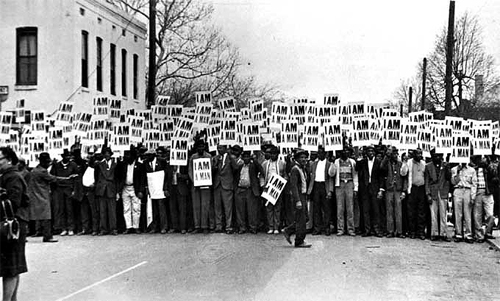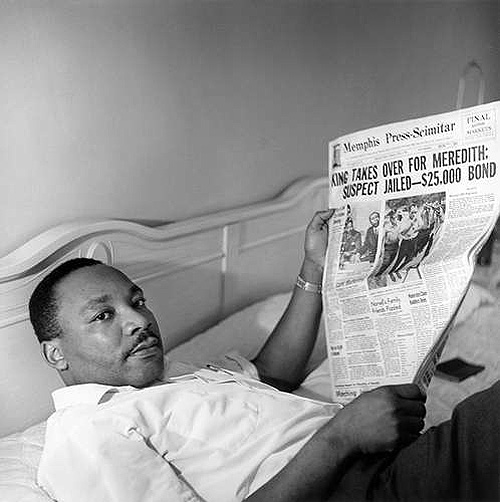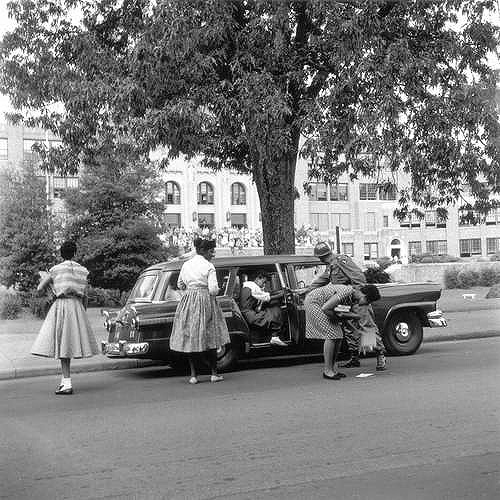Tags
Related Posts
Share This
The Importance of Ernest Withers
There’s more than just framing and composition that goes into making a photograph powerful. A picture can be aesthetically displeasing, but if the content evokes a feeling from the viewer, whatever that feeling is, it is worthwhile. The current exhibition of Ernest C. Withers’ photographs at Monroe Gallery of Photography follows a bevy of key players in the Civil Rights Movement and, while they are all composed with beauty and care and displayed in a rather minimalistic manner, it also is the story and the people themselves that make the photographs interesting.
Withers did not necessarily consider himself an artist. Bigotry and intolerance can be a great motivation to become, as he referred to himself, a “news photographer.” While Martin Luther King Jr., and Malcolm X motivated the African American community to find their voice in the United States, Withers documented them, showing the world their heroes. He captured their character and strength, as well as their humanity, all with the snap of a camera.
Born in Memphis, Tenn., Withers’ upbringing was probably very similar to the very people he would go onto document during the peak of the Civil Rights Movement. Trained at the Army School of Photography during WWII, Withers then went on to serves as one of Memphis’s first African American police officers before his career in photography.
White walls and black frames bring focus to the work on display at the Monroe gallery. Colorless photographs of an oppressed people do more to the viewer who has even the most basic understanding of the segregation and hatred our own country enforced than a handful of words on a page could ever do. That is why these photos are arranged in the way that they are. An ample amount of space between each picture gives viewers enough time to be intrigued by a stoic photograph of Martin Luther King Jr. and then immediately disgusted by photos of racist persecution, without being overwhelmed. These bare, white walls that consume the black frames allow the pictures inside of these frames to break free and run wild inside the viewer’s mind.
“I AM A MAN” reads the signs held by dozens of sanitation workers rallying for solidarity. The viewer is swarmed with text that begs our modern society to ask, “Why should anyone have to defend their existence?”
“Don’t buy gas where you can’t use the Rest-Room,” says the bumper sticker on a vehicle that is most-certainly not owned by a black family, who is content with their community’s current views on cohabitation.
Withers also documents the musical scene in Memphis, with pictures of James Brown, Aretha Franklin, Al Green and even Elvis— all grounded with the feeling of “we’re changing the world.”
The Monroe Gallery is located at 112 Don Gaspar Ave. Ernest Wither’s work will be on display until Nov. 24, 2013.









 Jackalope Magazine is the student magazine of Santa Fe University of Art and Design. Building on the interdisciplinary nature of our education, we aim to showcase the talent of our university and character of our city.
Jackalope Magazine is the student magazine of Santa Fe University of Art and Design. Building on the interdisciplinary nature of our education, we aim to showcase the talent of our university and character of our city.
Recent Comments